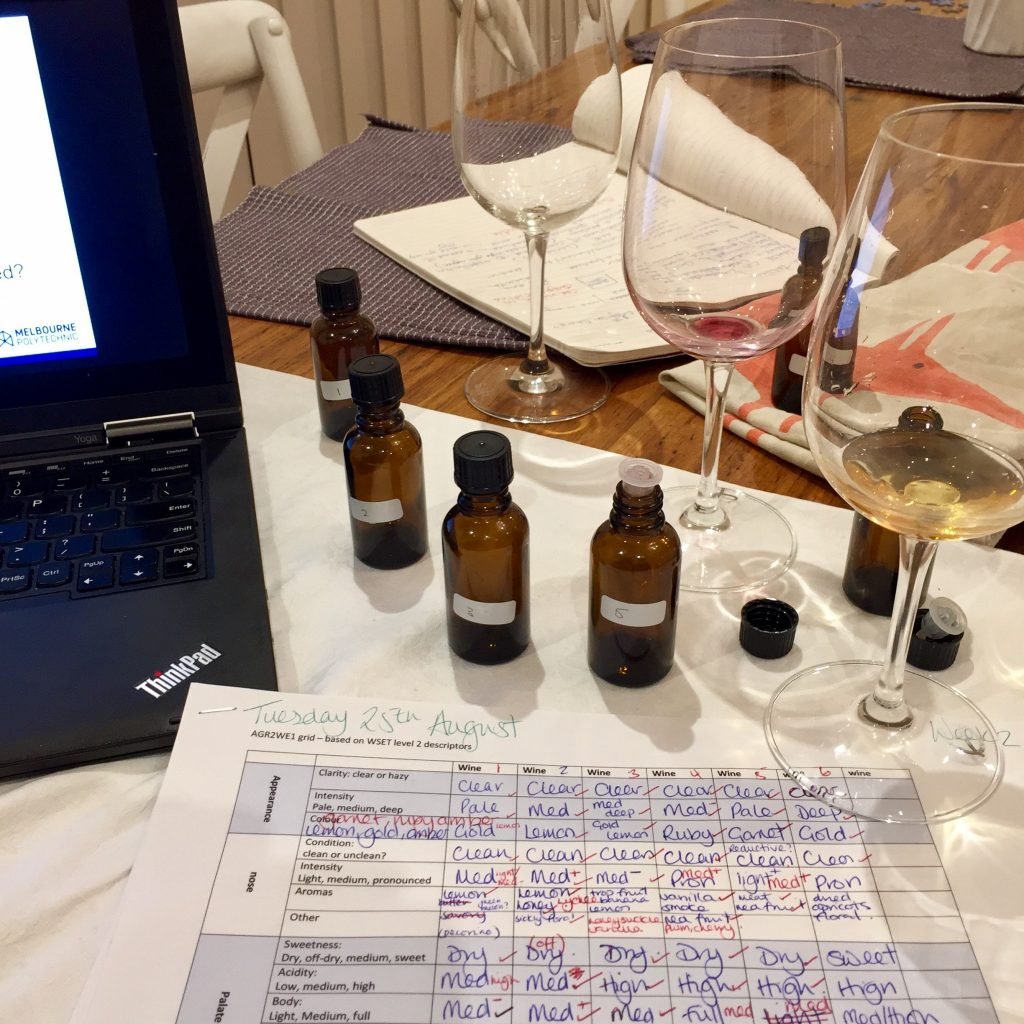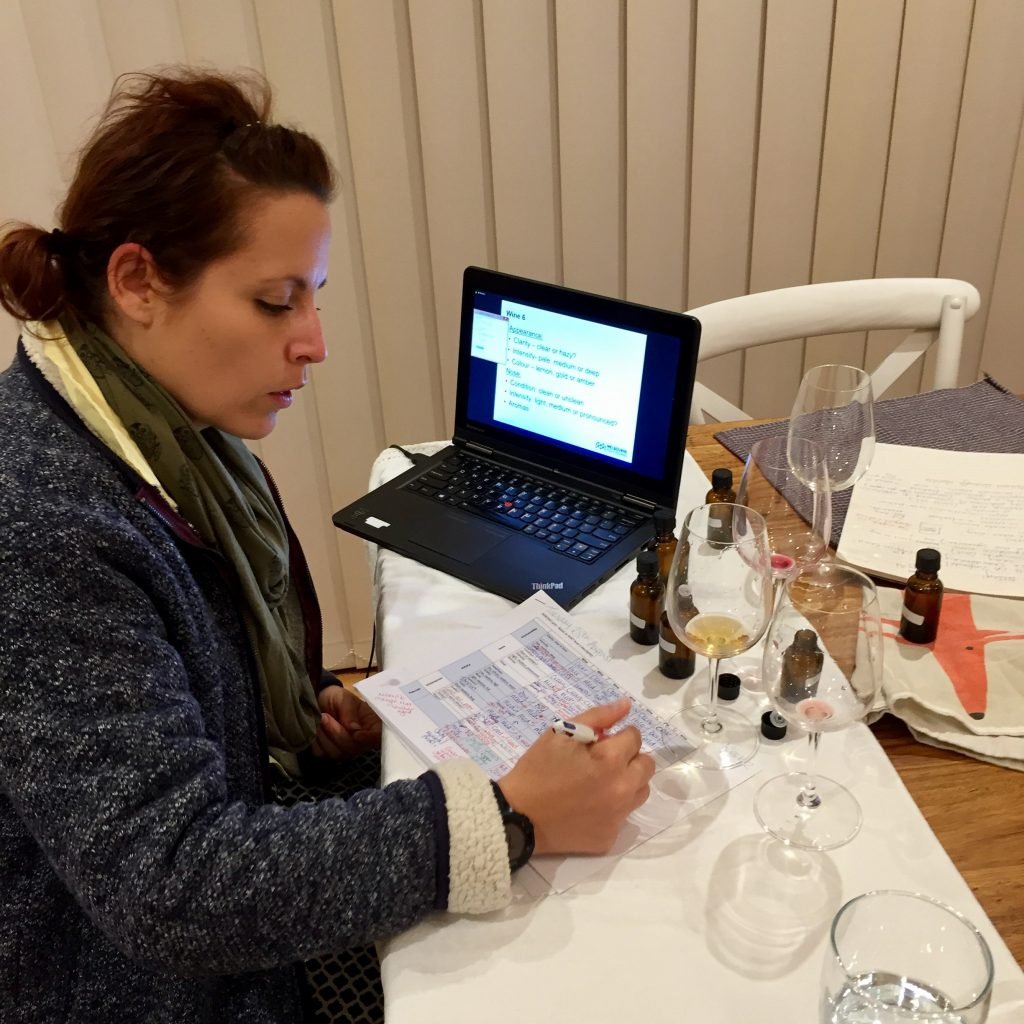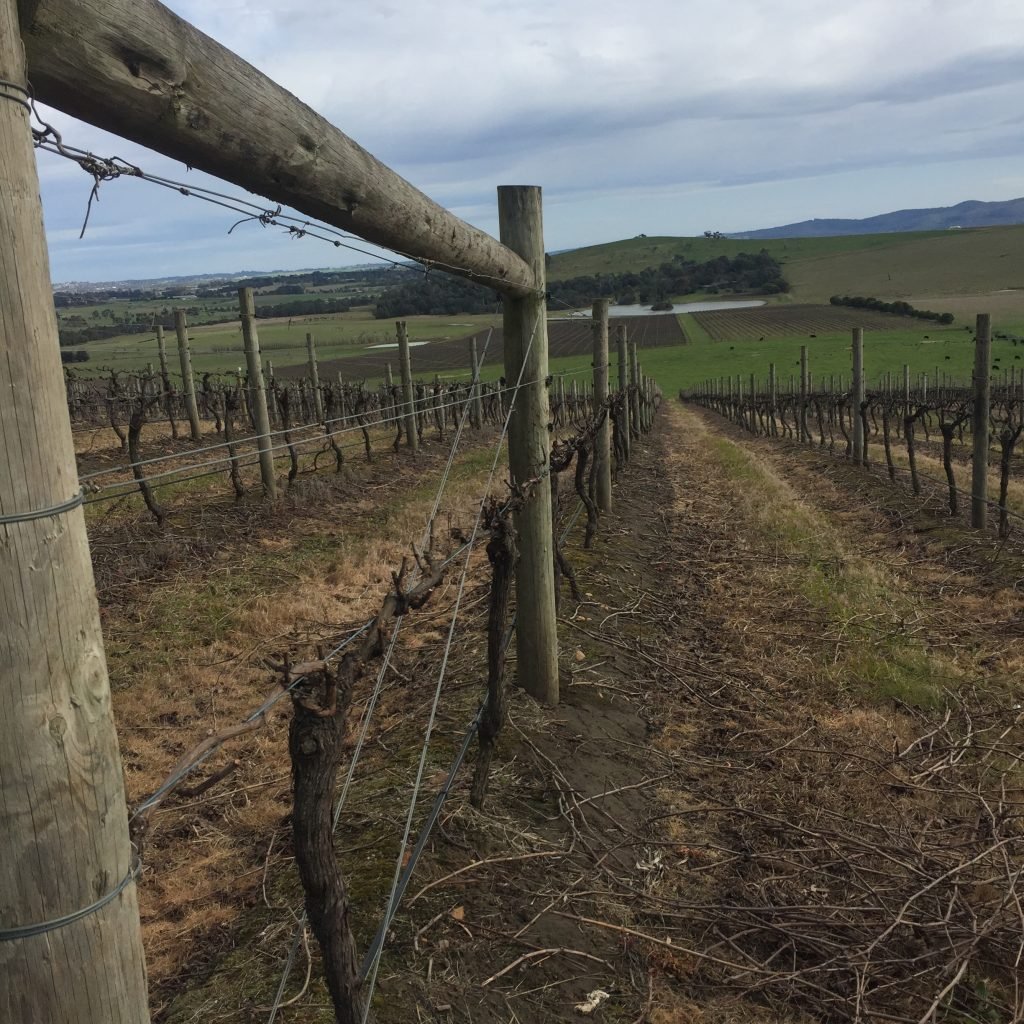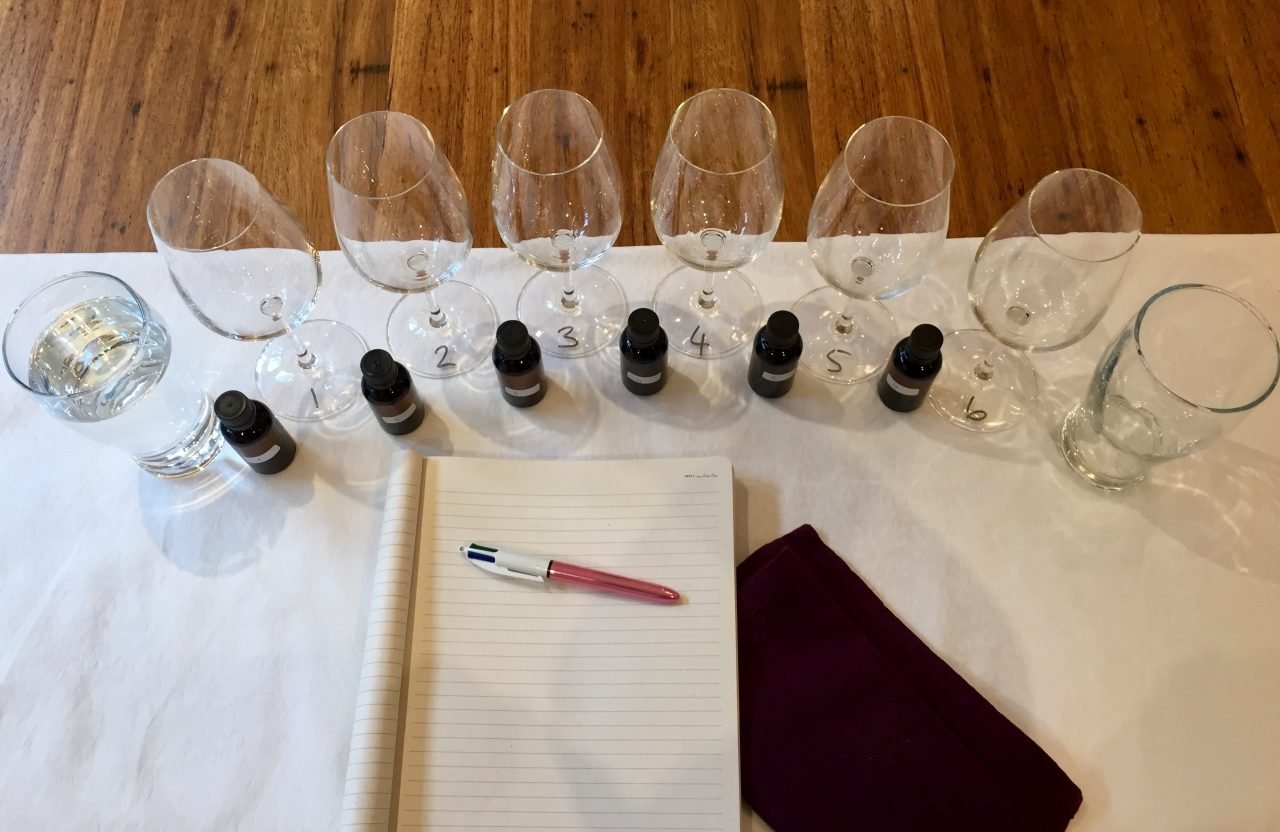This week I was flat-out. Not only did my studies really hot-up; as well as being a full-time student, I worked most of the week as a casual relief teacher. This is going to be a roller coaster of a semester; as if the complex world of winemaking was not enough, grapevines are marvellously complex organisms and the race is on to learn all I can before I actually meet one, snips in hand.
Top 3 things I’ve learnt this week:
1. Home wine tasting

Tasting tutorial in action
The sensory unit of my course this semester, Wine Evaluation 1, is taught by blended delivery. Each week, to our delight, we receive our little package of wine. This Tuesday I received six little bottles of mystery wine and eagerly constructed my little home tasting zone.
 The tasting is carried out along with an internet tutorial, where after our own evaluations the identity of the mystery vinos are revealed. Not only is this, as I’m sure you can imagine, heaps of fun, but I learnt so much in such a small space of time.
The tasting is carried out along with an internet tutorial, where after our own evaluations the identity of the mystery vinos are revealed. Not only is this, as I’m sure you can imagine, heaps of fun, but I learnt so much in such a small space of time.
Examples: Aged Nebbiolo often has an orange tinge to the rim around the glass. Gewurztraminer grapes have a pinkish tinge often leading to a pale yellow wine with a lychee or rose scent. High acidity will reinforce tannin. See!
2. Terroir
You may have seen this word banded about on the back labels of wine or in reviews. In leyman’s terms it is a single word used to encompass a whole range of factors involved in the cultivation of quality wine grapes. These factors include the soil, climate and viticultural practices used, all of which have their own influence on the growth and worth of the grapes produced.

http://winefolly.com/tutorial/terroir-definition-for-wine/
Some of the best wines in the world are a true expression of their terroir. The most astute of wine experts can use the nuances caused by these factors, to identify the origins of a wine with pin-point accuracy. Sometimes right down to the vineyard block the grapes were grown on (meso-climate).
3. Climate complexity
Vines are fussy. In some ways they are kind of like tenacious weeds that grow in a wide range of environments – probably the reason why they are found in so many parts of the world. However, on the other hand, they are very complex organisms. They might have the capacity to grow in a lot of places, but if you are after a high yield of exceptional quality fruit, the climate is vitally important. Even if you have all other factors of terroir sorted, the climate in any given season can make or break a vintage.

Winter vines
With regards to grape cultivation there are three tiers of climate for consideration. Macro-climate is the generalised average climate of the wine region in question. It is great when referring to cool or warm climate regions, but can be misleading as each region can have a range of Meso-climates within.
Meso-climates are variations in climate within a region. These variations can be due to factors like altitude, slope and which direction the vineyard faces.
Even more complicated are micro-climates, within a vineyard block, row, individual vine canopy or bunch. Natural wind breaks or shading from rows of trees as well as the position of a vine within a row can have a localised impact.
Understanding the climactic considerations of your crop is important when winemaking. Some winemakers pick and ferment individual parcels of berries from different locations in the vineyard. Blending the resulting wine reveals the best expression of the fruit.
Headfirst into another busy week…
Freshly recovered from Christmas in July, I am ready to hit the books again. On Wednesday, for the second time on this course I will will be getting intimate with some vines. This time, instead of battling a lush canopy at picking, I’ll be pruning the bare canes of winter. (Trying not to jeopardise next year’s yield!)
I have my second home tasting on Tuesday. At the weekend, hopefully I will have the opportunity to visit the Macedon wine region for the first time, to practice my new pruning skills.
Thank you for reading, see you next week…

